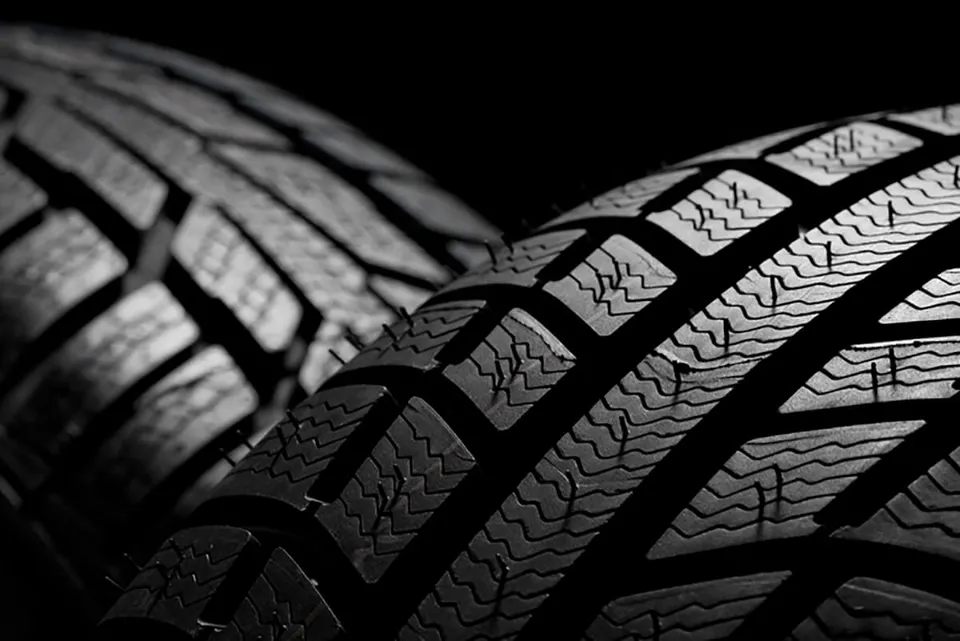The stark contrast in safety performance between the top tyres and the also-rans will be exposed when new tyre labelling becomes law this year.
The difference between an A-graded tyre and one graded G could be the difference between life and death, according to the boss of Goodyear Dunlop.
“The stopping distance of a car fitted with the higher graded tyres compared to a car with the lower graded ones could be as much as 18 metres, and that’s the difference between having a serious crash and avoiding one,” said Arthur de Bok, president of Goodyear Dunlop Tyres Europe, the Middle East and Africa.
“Up until now the attitude has been ‘tyres are black and round and if I can get them at a good price I will buy them’.”
That, he says, will change thanks to the new tyre labelling. From November 1, all new tyres sold in Europe will be rated according to their fuel efficiency, wet grip and noise levels.
“There is far more to a tyre than those three factors, but it’s a start in educating the public,” adds de Bok.
“What will be interesting is how the legislation affects people’s buying choice once it becomes obvious what the differences between the various grades are.
“Market dynamics will determine how big the price differential is between the top and bottom grades, although the investment from the tyre companies in the higher grades will have been more and that money has to come back.”
De Bok said he was not allowed to talk about what grades of tyres his company would be offering until June due to an agreement in place between Brussels and the Tyre Manufacturers’ Association. That agreement exists to ensure there is ‘a level playing field’.
However, he told Fleet News it was possible that no manufacturer would be in a position to offer the best-performing A-grade tyres in the early stages of the new legislation.
Legislators were keen to set the standards high enough to be aspirational to encourage manufacturers to strive for even better standards in the future.
“Everyone in the tyre business will, however, be striving to achieve the best they can in the time left,” he said.
All tyres manufactured after July 1 will have to have the appropriate labels on them setting out their rating (see below).
And anyone selling tyres directly to fleets or the public will be obliged to by law to inform them of the legislation and explain the gradings.
“The new rules have meant a lot of work for companies like ours but the benefits should be enormous, both in terms of safety and fuel saving,” said de Bok.
“But for tyre companies it will mean the need for even more investment as they try to raise even higher the standard of the products they make.”
Some experts believe this might lead to a rise in prices as tyre makers seek to recoup the cost of investment. However, the pressure to raise prices might be alleviated by increased sales as fleets and the public turn away from those budget brands which do not reach the highest labelling levels.
Labels highlight wet grip, fuel efficiency and noise
Under the new labelling regulation, all tyres produced after July 2012 and on sale in the EU from November 2012 will need to be accompanied by a label at point of sale providing information on wet grip, fuel efficiency and exterior rolling noise.
The labels are intended to make it easier for drivers and fleet managers to choose tyres which cut fuel use and improve safety.
Tyres are responsible for approximately 20% of a vehicle’s fuel consumption, mainly due to their rolling resistance.
Reducing rolling resistance can therefore contribute significantly to improving the energy efficiency of road transport, hence reducing CO2 emissions.
The labels will be similar to the colour-coded energy rating labels already introduced for new cars and some used cars.
As many fleet managers do not see new tyres before they are fitted, the labels will accompany the paperwork.
Tyre manufacturers will also be required to provide label information on their websites.

















Login to comment
Comments
No comments have been made yet.